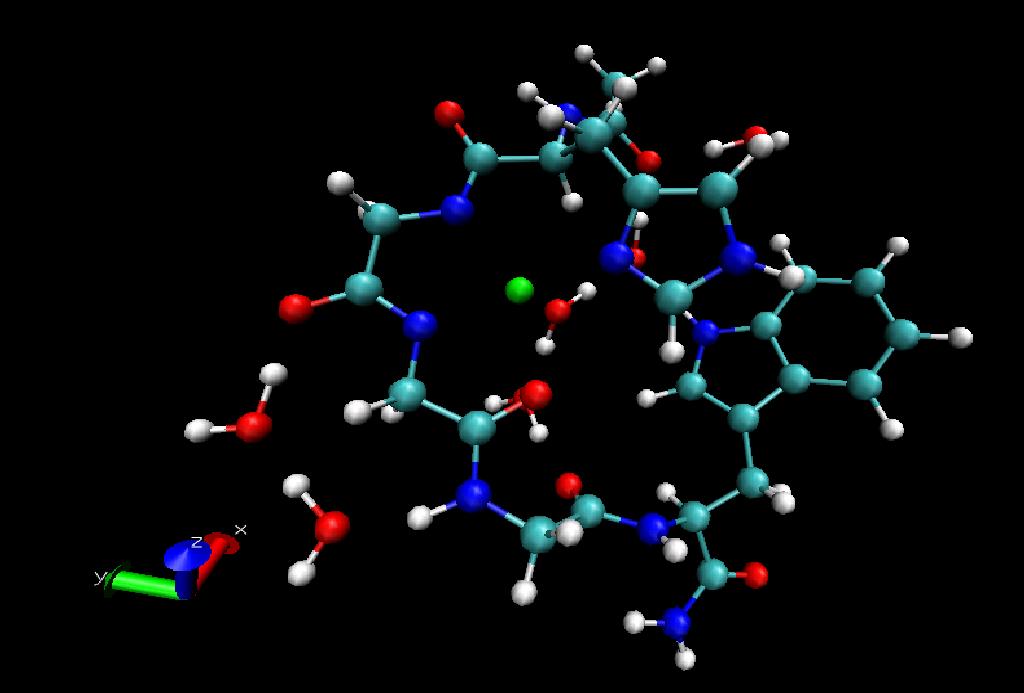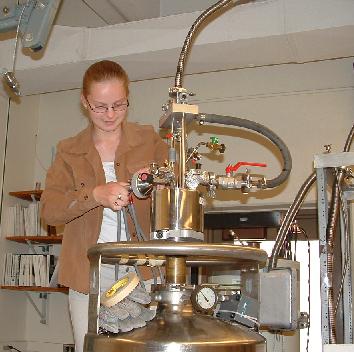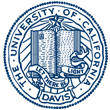UC Davis Physics Department
June 14 to August 21, 2015


Research Project Areas:
- Condensed Matter Experiment
- Condensed Matter Theory
- Complex Systems and Computational Physics
- Nuclear Physics Experiment
- Particle Physics Experiment
- Quantum Gravity
- Astrophysics
Project Descriptions
Condensed Matter Experiment
Shirley Chiang
Dr. Chiang's laboratory uses high-resolution microscopy to study the surfaces of metals deposited on both semiconductor and metal substrates. This work improves our understanding of two-dimensional materials growth and transformation, which are of technological importance in semiconductor devices, magnetic disks, and heterogeneous catalysis. Understanding how the surface orders during the processes of surface reconstruction, adsorption of atoms and molecules, and phase transformations allows better control of the surface structure and properties. Dr. Chiang's current work is on the multiple surface structures formed by the adsorption of iridium on germanium surfaces. Ir forms unusual connected pathways between 2D islands on Ge(111), and it forms 1D islands on Ge(110). An REU student will work with a graduate student in growing materials and imaging their surface changes. The student will learn to operate sophisticated ultrahigh vacuum surface equipment: either a low energy electron microscope for real-time measurements at 10 nm lateral resolution of surface dynamical processes as a function of both temperature and adsorbate coverage, or a variable temperature scanning tunneling microscope for atomic-scale imaging of nucleation and growth at steps and defects. The student will also use image processing software to analyze the measurements.
Nick Curro
Dr. Curro's group studies the behavior of strongly correlated electron materials at low temperature using Nuclear Magnetic Resonance (NMR). There are numerous cases in the natural world where the collective behavior of a group differs dramatically from that of the individual particles. A prime example is the flocking of birds, which cannot be understood by investigating a single bird. These beautiful and unexpected phenomena are known as emergent behavior, and play a role in all realms of science, from the behavior of animals and people, to the quantum mechanical realm of the electron. In some cases electrons in condensed matter exhibit behavior typical of individual particles, but they can also do unexpected and surprising things. Superconductivity, for example, arises because of interactions between electrons that enables them to enter into a new quantum phase of matter. The group uses NMR to investigate these new types of quantum behavior of electrons, in materials such as heavy fermions, iron pnictides, and transition metal oxides. An REU student can participate in hands-on or computational aspects of the work.
Dong Yu
Dr. Yu's research group explores the physics governing low dimension materials. One possible project is to help realize Mott transistors incorporating vanadium dioxide (VO2) nanobeams. VO2 is a strongly correlated material, which has an insulator to metal phase transition at 68 degree Celsius. The transition can be induced by temperature or by electric field. The electric field-induced transition can be the basis of a new type of transistor which may operate at ultrafast speed and very low power. We aim to use electrochemical gating to achieve the electrically driven phase transition and use spatially resolved optoelectronic techniques to understand its nature.
Xiangdong Zhu
Dr. Zhu studies biomolecular interactions non-invasively by detecting minute changes in optical reflectivity when a probe molecule reacts with target molecules on a solid surface. Biologists usually rely on fluorescent labels to study biomolecular processes, yet in many cases, the labels themselves alter the very processes under study. Dr. Zhu's group has developed a novel ellipsometry method for non-invasive, high throughput detection of biomolecular interactions on solid surfaces. An REU student will use the state of the art equipment to fabricate microarrays of biologically significant molecules and will study subsequent biomolecular binding reactions of probe molecules with these microarrays. The project will introduce a physics-oriented undergraduate to issues of significance for life sciences and how some of them can be addressed in a condensed matter physics laboratory. Previous coursework or research related to either optical techniques or biology would be helpful.
Rena Zieve
1. Superfluid vortices: All rotation in superfluid helium is due to quantized vortex lines, and changes in the fluid flow occur as these vortex lines move. In particular, the vortices have normal modes much like the modes of a tightly stretched string. Calculations predict that at large excitation amplitudes the behavior becomes non-linear. The resulting interactions between modes may be a main mechanism for energy transfer from larger to smaller length scales in low-temperature superfluid turbulence. An REU student will excite and measure modes along a single, isolated superfluid vortex and search for the transition to non-linearity. (This work follows directly on one of the summer 2014 REU projects.) The student must have completed all standard lower-level math courses. Upper-level mechanics, additional mathematics, or experience with electronics may be helpful but are not required.
2. Granular materials: This ongoing project investigates shape effects in a relatively controlled way, using ball bearings welded together to construct more complex shapes. A pile of these grains, when tilted past an angle of stability, undergoes an avalanche with rapid flow of particles, much like sand in an hourglass. The angle of stability depends on the shapes of the individual particles that make up the pile. The current goal is to understand how the exact configuration of grains within a pile causes the onset of the avalanche to change. The lab's equipment includes a setup for rotating granular samples, and digital still and video cameras interfaced to a personal computer. The apparatus is straightforward to operate; the challenge lies in finding meaningful patterns within the huge amount of available detail. Depending on the student's interests and on what is accomplished before the summer begins, the work may focus mainly on improvements of the data acquisition procedure or on data analysis, the latter involving significant computer programming.
Condensed Matter Theory
Richard Scalettar
Dr. Scalettar's group uses Quantum Monte Carlo simulations to study magnetic, metal-insulator, superfluid and superconducting transitions in condensed matter and in atomic condensates. Projects generally involve studying a simple model to see if it can capture the qualitative physics of a particular experimental system. Typically an REU student begins by learning some of the fundamentals of the Monte Carlo method and statistical mechanics before learning about an open question in the field and writing a research code to address it. (An introductory college programming class provides sufficient background.) Dr. Scalettar's group includes postdoctoral researchers, graduate and undergraduate students with whom the REU student can work. Work of past REU students can be found here:
- Helen Craig: Phys. Rev. B76, 125103 (2007).
- Miriam Huntley: Phys. Rev. Lett. 100, 116405 (2008).
- Brianna Dillon: Phys. Rev. B82, 184412 (2010).
- Tyler Cary: Phys. Rev. B85, 134506 (2012).
Rajiv Singh
Dr. Singh's project involves series expansion methods, such as high-temperature series expansions, which provide a controlled ways to study thermodynamic properties of macroscopic many-body systems. They are straightforward to calculate and analyze, and useful for understanding a variety of systems and experimental probes, including magnetic susceptibility and specific heat of spin models, spin-wave spectra of magnetically ordered phases, and critical phenomena near quantum phase transitions. A typical project would focus on one of these problems. The student would learn and apply certain expansion methods. To complete the project within the REU timeframe, the student should have some prior knowledge of quantum mechanics and computer programming.
Complex Systems and Computational Physics
Jim Crutchfield
Dr. Crutchfield investigates the structures and patterns that emerge in complex systems. Topics include nonlinear dynamics, quantum computation and dynamics, interacting multiagent systems, distributed robotics, and evolution (both as optimization, as pursued in computer science, and as a model of emergent biological organization). A main thrust is programming that automatically discovers emergent structures and builds filters to identify similar patterns. An REU student will work on developing a particular numerical simulation, and if theoretically inclined can also participate in more rigorous mathematical work. The student will become familiar with mathematical concepts from statistical mechanics, dynamical systems, information theory, and the theory of computation. Only minimal prior programming background is needed for a successful experience, but enjoyment of computational work is key.Nuclear Physics Experiment
Manuel Calderon and Daniel Cebra
With the nuclear group's experiments running at Brookhaven's Relativistic Heavy Ion Collider (RHIC) and at the Large Hadron Collider (LHC) at CERN, an REU student will mainly do calculations and data analysis. As one example, the production of hadrons in heavy ion collisions at RHIC has been parameterized as a function of the number of participating nucleons and the number of binary collisions. These numbers are useful when comparing measured quantities as a function of the centrality of the collision to calculations done for the same centralities. Unfortunately, neither of the numbers can be measured directly in the experiment. Instead their values are obtained by comparing the measured distribution of charge multiplicity to the corresponding distributions obtained from phenomenological Glauber calculations. Applied to nucleus-nucleus collisions, Glauber theory calculates cross-sections from quantitative considerations of the geometrical configuration of the nuclei. An REU student will write, compile and validate code for a Glauber calculation. Ultimately, from a probability distribution for nucleons within the nucleus (based on the measurements of nuclear matter density) and a fundamental cross-section for nucleon-nucleon collisions, the code will calculate the numbers of participating nucleons and binary collisions as a function of impact parameter. Time permitting, the student can apply phenomenological models to obtain the charge multiplicity and compare the results to measured distributions.
Experimental Particle Physics
Bob Svoboda
Dr. Svoboda works on the Sudbury Neutrino Observatory SNO+ experiment, which is a multi-purpose neutrino detector located more than 2 km underground in Canada. Science goals include: determining whether or not neutrinos are their own antiparticle, determining the relative ratio of pp to CNO fusion in the sun, and looking for evidence of proton instability. This would mainly be a hands-on project, but some small amount of computer simulation would also be included. A student would learn clean room laboratory techniques in our NanoFiltration (NF) lab as we do R&D on the removal of trace elemental contaminants from the SNO+ liquid scintillator. In addition s/he would learn how to perform Neutron Activation Analysis (NAA) using our campus nuclear reactor to assay the resultant liquids, and would help to build a beta-alpha coincidence counter we will construct this summer at Davis.
Mani Tripathi
Dr. Tripathi works on the Large Underground Xenon (LUX) experiment, which is the world's most sensitive device for detecting interactions of dark matter (DM) with normal matter, and its follow-up larger version called LZ. LUX is a large two-phase xenon time-projection chamber, located nearly one mile underground in the Homestake mine in Lead, South Dakota. It completed an 85-day data-taking run in 2013, which resulted in the world's most stringent limits on the DM-nucleon scattering cross section. It is currently in the midst of a 300 day data-taking period. For LZ we are involved in developing analog front-end electronics. Possible REU projects include simulating the response of LUX using the NEST package developed at UC Davis; designing, prototyping and testing electronics for LZ; working on a spark-getter system for purifying xenon; working with piezo-electric microphones for listening to bubbles in xenon; working on the development of Silicon Photomultipliers, which are the future of photon detectors; and analyzing data from LUX to look for dark matter. Our UC Davis-based work is a mix of computer-based and hands-on projects.
Quantum Gravity
Steve Carlip
Dr. Carlip works on the longstanding problem of reconciling quantum mechanics and general relativity. In the 80 years since the first papers on this subject, physicists have not succeeded in finding a complete, consistent quantum theory of gravity. In the past few years, though, interesting progress has been made in a new discrete approximation to quantum gravity, "causal Lorentzian triangulation." This approach approximates curved spacetime by a collection of flat building blocks, much as a curved geodesic dome is constructed from flat triangles. Dr. Carlip and graduate students have set up a computer code to evaluate quantum amplitudes in this approximation (by approximating a Feynman path integral). They are investigating a number of applications, ranging from studies of small-scale spacetime structure to a computation of the Hartle-Hawking "wave function of the Universe." An REU student would work on a variety of extensions of the code, and on the rather difficult task of extracting physically meaningful results from the simulations. For this project, a student must have substantial programming and mathematics background and familiarity with general relativity. Applicants are strongly advised not to list this project as their only interest on the application form!
Astrophysics
Lloyd Knox
Dr. Knox is a theorist who works directly with high-resolution data on the cosmic microwave background radiation as a member of the Planck and South Pole Telescope observational teams. An REU student will create visualizations of the propagation of gravitationally-driven sound waves in the plasma that filled the Universe for its first 380,000 years. By adding in new components such as extra species of neutrinos or "early dark energy," the visualizations will show how the evolution of the plasma depends on the matter content of the universe. The student will learn basics of cosmology, Fourier analysis, and relativistic perturbation theory. He or she will use existing Einstein-Boltzmann code solvers (in C++ or in Fortran) and write additional software for graphical analysis of the output through still plots and animations.
Matt Richter
An REU student working with Dr. Richter for the summer will analyze data from the EXES instrument (irastro.physics.ucdavis.edu/exes) on NASA's Stratospheric Observatory for Infrared Astronomy (SOFIA: www.sofia.usra.edu). EXES is a high-resolution, mid-infrared spectrograph designed for the study of molecules in space. Dr. Richter leads the EXES team. EXES will have its second set of test flights in Feb/Mar 2015. During these flights, we will be testing the performance of the instrument using a variety of astronomically interesting projects. Data analysis will involve substantial computer work; knowledge of Python or IDL is a plus.
Tony Tyson
Students have several options for research in Dr. Tyson's group this summer:
1. Development of Fast Regularized Mass Reconstruction: We need to make high-fidelity dark matter maps for more than 100,000 galaxy clusters in the coming decade. The current state-of-the-art algorithm for mass reconstruction is slow and should be improved to meet the future demands. Mass reconstruction is a mathematically ill-posed inverse problem. Certain forms of regularization are required to prevent over-fitting. However, the procedure is time-consuming. Students will either develop a new algorithm or parallelize the existing method using multi-cores. Necessary background includes coding skills and familiarity with numerical analysis.
2. Principal Component Analysis of Galaxy Shapes: The most promising method to constrain dark energy is to systematically analyze galaxy images that are distorted by gravitational lensing. Because galaxy shapes are complex, it is useful to find a method to parameterize galaxy images with a limited number of parameters. Principal Component Analysis (PCA) is a powerful method to reduce the dimensionality of data. Students will apply PCA to real galaxy images taken by Hubble Space Telescope. The challenge lies in the fact that the galaxy images need to adequately preprocessed in order to be efficiently PCA-ed. A student must have experience with IDL or MatLab, and familiarity with linear algebra and statistical analysis.
3. Compression and storage of redshift probability density functions: Accurate and compact representation of complex data products is essential in the current era of large astronomical projects. The REU student will work on finding a lossless (or very low loss) compression of the information stored in both 1-dimensional and 2-dimensional probability density distributions for galaxy photometric redshifts, or photometric redshift and type. The student will work with a small set of training data, but the project will eventually scale to run on millions of galaxies, so algorithm speed will be a factor. A student needs basic familiarity with data compression ideas, and some coding skills in C++ or Python. Familiarity with astronomy is ideal but not required.
4. Star-Galaxy separation in the near-infrared: Studies of our own Galaxy and cosmological studies using distant sources require an accurate separation of foreground stars from background galaxies. This separation is usually performed using shape information; however, the colors of objects in the near infrared can also be used to distinguish between stars and galaxies. The REU student will work on combining shape and color information using newly acquired near-infrared data to improve upon existing star-galaxy separation algorithms. This project requires familiarity with basic concepts of both astronomy and statistics.
5. Laboratory testing of CCDs for cosmology applications: Novel CCDs have been developed by the LSST project. They exhibit new charge transport effects, so a test laboratory has been set up to explore the new device physics and fully simulate the gravitational lens observations of LSST. A large optical re-imager simulates the LSST optical beam, and a xyz precision stepper moves the camera in the beam, all under LabView control. An REU student will undertake a prescribed matrix of tests using this system. The student should know LabView, and ideally have some experience with optics.
